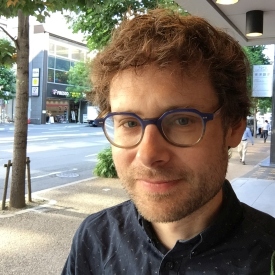Later this month, join me for presentations in both Washington, D.C. and Oakland, CA:
- At the 99th annual National Communication Association (NCA) conference, I will be chairing a session and presenting on “Embedding Literacy in the Neighborhood: Mobile Media in South LA, and Reducing the Participation Gap” in Washington D.C. on November 21st from 2-3:15pm (see below for extended description; location is Capitol Room/Lobby Level).
- Earlier in the month, our participatory mapping project will be presenting in Oakland at the California by Bike Summit on bicycles, digital media and apps on November 9th from 1-2:25pm with several of our RideSouthLA community partners. If you’ll be there, look us up! Details follow below.
For NCA on November 21st (see Thursday program):
My presentation will address “Embedding Literacy in the Neighborhood: Mobile Media in South LA, and Reducing the Participation Gap.” Co-authors include George Villanueva, François Bar, and Sandra Ball-Rokeach (all University of Southern California).
Our extended description:
When is it better to teach technology skills in street activities and community clubs? Our research investigates a new role for mobile media to address the digital divide, embedding the digital in neighborhood groups. Increasingly, the digital divide is better characterized as a “participation gap” that concerns access to the social practices and mentoring necessary to fully participate. Basic cell phone use, of course, is pervasive among youth and low-income groups, with distinct use patterns. If mentoring and social support are necessary for informal participation, how can marginalized populations be connected to new technology and media literacies?
New trajectories of participation are emerging with mobile media in neighborhoods. In South LA, our research investigates “participatory mapping” with basic cellphones (not smartphones), and within local bike clubs and nonprofit organizations. With this case we argue for a different approach to studying the digital divide.
In particular, we argue for an ecological approach that connects participation in neighborhoods on three levels, following the work on Communication Infrastructure Theory (Ball-Rokeach et al., 2006); specifically, across resident networks, local media and community organizations. Our research underscores how embedding technology – especially with mobile media – can spur collateral learning to help close the participation gap. At the same time, we warn how passion-driven learning can leave behind some of the most vulnerable unless the integration with community-based organizations is substantive.
For the Bike Summit on November 9th:
Cutting edge digital media — bicycles and building community
Learn about some leading experiments in digital media and community engagement related to bicycling in Los Angeles. Offer your own experiences and contributions on how mobile technologies are (and are not) transforming cycling. The panel will discuss community engagement efforts, including maps as neighborhood storytelling, experimentation with digital bike badges that make visible key identities within the community, and glimpses of efforts from other cities from Berlin to Atlanta. Participants will prototype “engagement mechanics” in a group workshop to make the examples real and actionable.Participants: François Bar, Annenberg Innovation Lab, USC; Otto Khera, Center for Scholarly Technology, USC; Benjamin Stokes, Doctoral Researcher at USC and co-founder Games for Change
